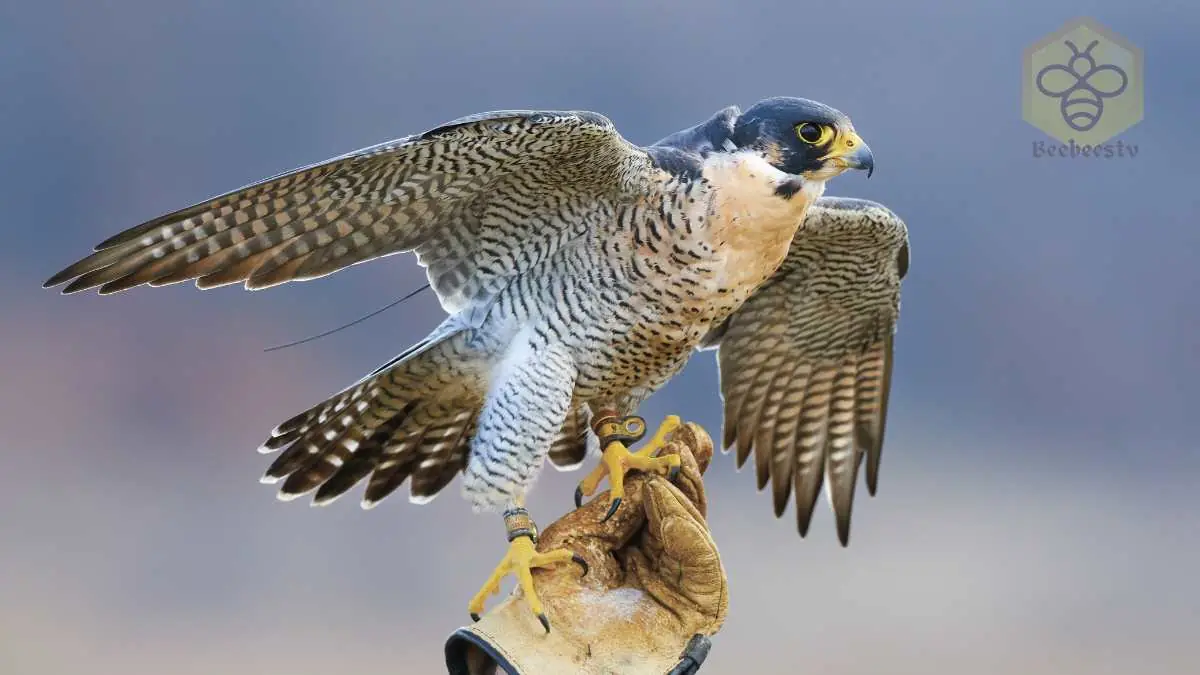Falcon: The Swift and Fearless Bird of Prey
Falcon
Introduction
Falcons are among the fastest and most skilled hunters in the bird kingdom. These magnificent birds of prey belong to the Falconidae family and are known for their incredible speed, sharp eyesight, and powerful hunting abilities. Falcons have been used in falconry for centuries and are admired for their intelligence and precision.
Scientific Overview
Scientific Name
Varies by species (e.g., Falco peregrinus for the Peregrine Falcon)
Common Name
Falcon
Scientific Classification
| Kingdom | Animalia |
| Phylum | Chordata |
| Class | Aves |
| Order | Falconiformes |
| Family | Falconidae |
| Genus | Falco |
Types of Falcons
There are more than 40 species of falcons, including:
- Peregrine Falcon (Falco peregrinus) – The fastest bird, reaching speeds of over 240 mph in a dive.
- Gyrfalcon (Falco rusticolus) – The largest falcon species, found in Arctic regions.
- Merlin (Falco columbarius) – A small, agile falcon known for its speed and maneuverability.
- American Kestrel (Falco sparverius) – The smallest falcon in North America, often mistaken for a songbird.
Habitat and Distribution
Falcons are highly adaptable birds that can be found on every continent except Antarctica. They inhabit diverse environments, including:
- Open plains and grasslands
- Mountainous regions
- Forested areas
- Coastal cliffs and wetlands
- Urban areas (where they nest on tall buildings)
Physical Characteristics
Size and Weight
- Small species (e.g., American Kestrel): 9–12 inches (23–30 cm), 3–6 oz (85–170 g)
- Large species (e.g., Gyrfalcon): 19–25 inches (48–64 cm), 1.5–3.5 lbs (700–1,600 g)
- Wingspan: 20–48 inches (51–122 cm)
Appearance
- Streamlined body – Built for speed and agility.
- Long, pointed wings – Allow rapid flight and precise maneuvering.
- Sharp, hooked beak – Used to kill prey efficiently.
- Keen eyesight – Falcons can spot prey from over a mile away.
- Varied plumage – Colors range from gray, brown, and black to white and rust, depending on the species.
Diet and Feeding Habits
Falcons are carnivorous and primarily hunt live prey. Their diet includes:
- Small birds (sparrows, pigeons, doves)
- Rodents (mice, voles)
- Insects (grasshoppers, beetles)
- Bats and small reptiles
Falcons use their speed and talons to catch prey mid-air or on the ground. The Peregrine Falcon is known for its high-speed aerial dives, striking prey with deadly precision.
Predators and Threats
Falcons have few natural predators but face dangers such as:
- Larger birds of prey (eagles, hawks, owls)
- Human threats (hunting, habitat destruction, pesticide poisoning)
- Nest raiders (raccoons, snakes)
DDT pesticide use in the mid-20th century nearly wiped out Peregrine Falcons, but conservation efforts helped them recover.
Reproduction, Babies, and Lifespan
- Mating season: Springtime (varies by region).
- Eggs per clutch: 2–5 eggs.
- Incubation period: Around 30 days.
- Chicks (eyasses): Hatch with white down feathers and grow flight feathers by 5–6 weeks.
- Lifespan: 12–20 years in the wild, longer in captivity.
Population and Conservation Status
Falcons’ conservation status varies by species:
- Peregrine Falcon: Once endangered, now recovered thanks to conservation programs.
- Gyrfalcon and Merlin: Stable populations, but climate change poses threats.
- American Kestrel: Facing population declines due to habitat loss.
Behavior and Lifestyle
- Diurnal (active during the day) – Most hunting occurs in daylight.
- Solitary or paired – Falcons often hunt alone but form strong monogamous bonds.
- Territorial – Defend their nesting sites aggressively.
- Fast and agile flyers – Can change direction quickly to catch prey.
Ecological Role
Falcons play a crucial role in maintaining the balance of ecosystems by controlling populations of birds, rodents, and insects. Their presence helps prevent the overpopulation of prey species, which could otherwise cause ecological imbalances.
FAQs About Falcons
1. What is the fastest bird in the world?
The Peregrine Falcon holds the title, reaching speeds of over 240 mph (386 km/h) in a dive.
2. Do falcons migrate?
Yes, many falcon species migrate seasonally to find food and suitable breeding grounds.
3. Are falcons used in falconry?
Yes, falcons have been trained for hunting in falconry for thousands of years.
4. Can falcons see better than humans?
Yes! Falcons have eyesight that is 8 times sharper than humans, allowing them to spot prey from great distances.
5. Are falcons endangered?
Some species, like the Peregrine Falcon, have recovered from near extinction, while others face habitat-related threats.
Conclusion
Falcons are extraordinary birds of prey, admired for their speed, intelligence, and hunting abilities. They have adapted to various environments, from wild cliffs to bustling cities, proving their resilience and importance in ecosystems. With ongoing conservation efforts, many falcon species continue to thrive, showcasing the beauty and power of nature’s ultimate aerial predators.
